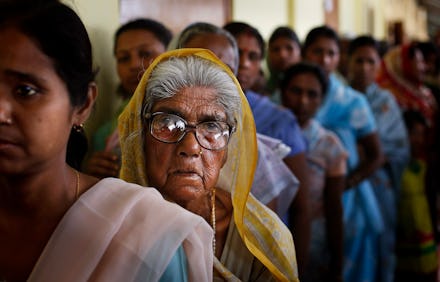Here's How Big the World's Largest Democracy Really Is, by the Numbers

When the world's largest democracy goes to vote, everything about it is bound to be huge.
April 7 marked the beginning of the 16th parliamentary elections in India. Poised to be the most historic election in decades, hundreds of millions of people will vote in their new government in nine phases over the next six weeks.
So just how big is this election? Here are some numbers to help you see how massive the operation is behind India's general elections:
About 814.5 million people are registered to vote in the 2014 Indian elections, up from 713 million voters in 2009. That's 2.6 times the entire population of the U.S. in 2012.
This election will decide who will occupy the 543 seats in the Lok Sabha (the Lower House) of the Indian Parliament and who will go on to become the next prime minister. Each party selects a prime ministerial candidate, who can win the nation's highest office if his party manages to win a majority of 272 out of the 543 seats.
The scale of this democratic operation is so immense that it requires around 5 million people simply to organize and execute the procedure and just as many to police it.
In order to make it convenient for voters located in remote areas, the Election Commission of India declared that no voter would have to travel more than 2 kilometers to a polling booth.
An astonishing 28% of India's MPs have criminal records and unfortunately, the new crop of candidates doesn't seem to be too clean either: nearly one-fifth of them face criminal charges. The U.S. Congress fares remarkably well in comparison, as none of the sitting members are facing criminal charges and in 2013, only two members were convicted of a crime.
The U.S. presidential elections may be the world's most expensive, racking up $7 billion in campaign dollars, but India isn't far behind. Indian politicians spend a whopping $5 billion in campaigning, triple the sum for the last national elections in 2009.
A new phenomenon that hasn't been seen before is the rise of the first-time voter. Nearly 150 million 18 to 23-year-olds will qualify to vote for the first time. An unpredictable demographic that makes up nearly 10% of the total electorate, the young voters' affinity for social media led to politicians spending almost $83 million on social media advertising.